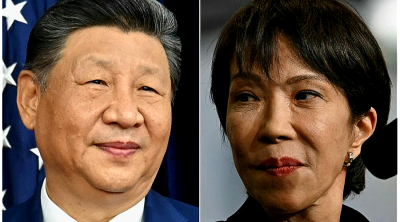
China has been at the forefront of Asia’s remarkable rise to prominence in the global economy over the past 30 years, becoming the epicentre of trade and growth.
But more complex times are coming and new challenges will need to be met.
New research from the McKinsey Global Institute asserts that Asia may be on the cusp of a new era.
Asia is in a strong position to influence and shape a new era not only for its own economies but for the world because it is the world’s “new majority” — accounting for more than half of the key metrics that we use to measure the world economy.
For example, Asia accounted for 57 percent of the growth in global GDP between 2015 and 2021, 59 percent of the growth in global trade between 2001 and 2021, and 53 percent of global manufacturing value added in 2022.
China accounts for the majority of Asia’s contribution to these numbers, and it will be critical in maintaining the impressive momentum of the region in a new era.
The research highlights opportunities and challenges for China in five domains.
The world is heading toward a multi-polar world and China is clearly an important pole.
In 1990, it was the world’s 11th largest economy but became the second largest by 2010 and larger than the economies of the European Union by 2021.
In purchasing power parity terms, it rose to be the world’s biggest economy in 2014.
China is also a major trading hub. In 2021, China was at one end of the world’s 20 largest trade corridors and 11 of the world’s 20 fastest-growing trade routes between 2016 and 2021.
China’s trade with Brazil, Chile, Poland, Saudi Arabia and the United Arab Emirates has been growing by more than 15 percent a year.
Trade between China and Vietnam grew by 16 percent annually, suggesting the potential for an emerging trade triangle between China, other Asian economies, and the United States.
In 2022, it accounted for 42 percent of the value flowing through the world’s 20 largest trade corridors. Ten of the world’s top 40 microchip trade corridors constitute imports from the Chinese mainland.
China has become an innovation economy in many respects. It punches above its weight in manufacturing related sectors, like electric vehicles and consumer electronics.
But as manufacturing becomes increasingly commoditised, China needs to add to its strength in tech manufacturing and innovate in technologies such as artificial intelligence and clean tech.
Of all new unicorns related to transversal technologies formed after 2016, 20 percent originate from China. The share is even higher in sectors such as electrification, renewables and climate tech (46 percent) and applied and generative AI and machine learning (26 percent).
However, China still needs foreign input in tech value chains. In 2022, China imported three times the value of intellectual property as it exports.
By 2050, 30 percent of China’s population is expected to be elderly (aged 64 or above). To continue to improve living standards, sustaining wage growth and productivity gains will be critical.
Up to one-third of global occupational and skills transitions may occur in China over the coming decade.
Automation could also be important. China’s robot density in the manufacturing industry grew by 35 percent a year between 2017 and 2021, with 322 robots installed for every 10,000 employees. As such, China ranked fifth in the world for robotisation.
China needs more energy to continue its industrial upgrading and urbanisation.
China is expected to account for more than 30 percent of global final energy consumption growth between 2021 and 2050. Asia as a whole is the world’s largest net importer of fossil fuels — at $775 billion in 2021.
China imports more than 70 percent of oil and over 40 percent of gas it consumes. China also relies on imports of many minerals that are key to the energy transition.
Nevertheless, Asia — notably China — is in a strong position to provide what the rest of the world needs for its energy transition.
China assembles 66 percent of all battery cells and manufactures 54 percent of the world’s electric vehicles (EVs).
It also has 74 percent of the production capacity for EV battery components, and for more than 80 percent of global manufacturing at all key stages of solar panels production. However, challenges remain.
For example, industry’s weight in China’s final energy consumption is the highest of all its sectors at 53 percent, much higher than the corresponding weight in the European Union, the United Kingdom and North America. Industry is the hardest sector to decarbonise.
China and Asia as a whole need to continue to mobilise more capital.
China’s incremental capital-output ratio — the amount of money needed to yield a unit of growth — rose threefold from 2010 to 2022. In other words, for every unit of GDP growth, three times more capital is required today.
A new era is clearly going to be very different from the past 30 years when Asia — with China in the vanguard — surged to global prominence.
Equally clear is that the many potential challenges that China faces in a new era do not have a clear playbook to follow. New strategies may be needed for the new era.
ADVERTISEMENT
ADVERTISEMENT








































